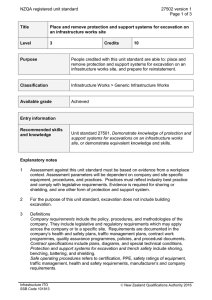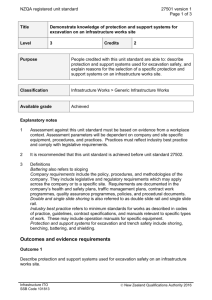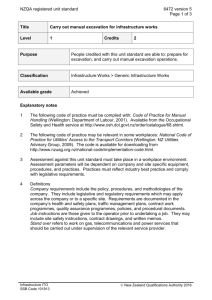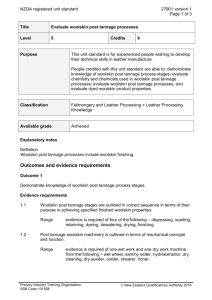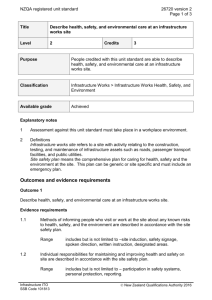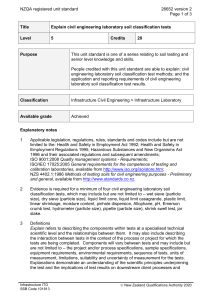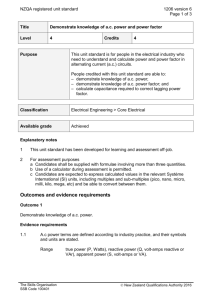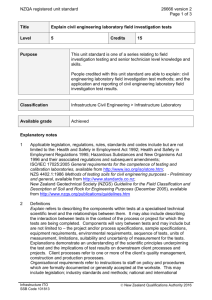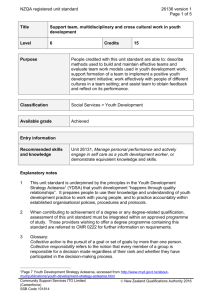23288 Explain single point groundwater control for an infrastructure
advertisement
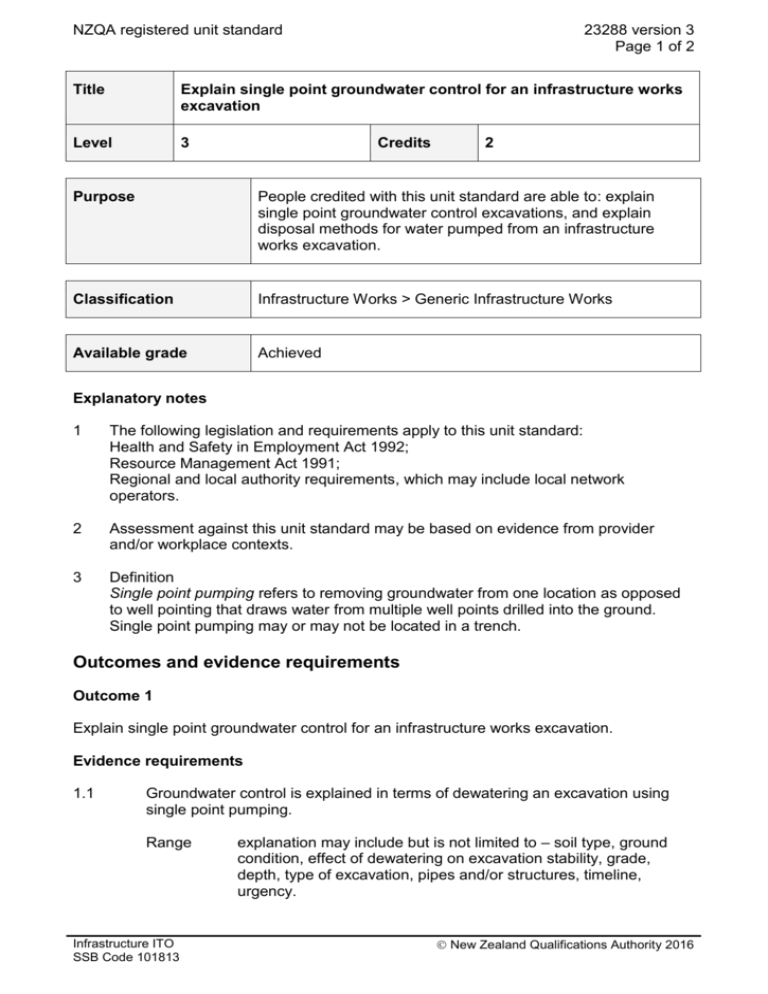
NZQA registered unit standard 23288 version 3 Page 1 of 2 Title Explain single point groundwater control for an infrastructure works excavation Level 3 Credits 2 Purpose People credited with this unit standard are able to: explain single point groundwater control excavations, and explain disposal methods for water pumped from an infrastructure works excavation. Classification Infrastructure Works > Generic Infrastructure Works Available grade Achieved Explanatory notes 1 The following legislation and requirements apply to this unit standard: Health and Safety in Employment Act 1992; Resource Management Act 1991; Regional and local authority requirements, which may include local network operators. 2 Assessment against this unit standard may be based on evidence from provider and/or workplace contexts. 3 Definition Single point pumping refers to removing groundwater from one location as opposed to well pointing that draws water from multiple well points drilled into the ground. Single point pumping may or may not be located in a trench. Outcomes and evidence requirements Outcome 1 Explain single point groundwater control for an infrastructure works excavation. Evidence requirements 1.1 Groundwater control is explained in terms of dewatering an excavation using single point pumping. Range Infrastructure ITO SSB Code 101813 explanation may include but is not limited to – soil type, ground condition, effect of dewatering on excavation stability, grade, depth, type of excavation, pipes and/or structures, timeline, urgency. New Zealand Qualifications Authority 2016 NZQA registered unit standard 23288 version 3 Page 2 of 2 Outcome 2 Explain disposal methods for water pumped from an infrastructure works excavation. Evidence requirements 2.1 Disposal methods are explained in terms of relative contamination of the removed water, equipment and/or structures used, and regional and local authority environmental requirements. Range filtration, flocculation, retention, decanting, dispersal, evaporation. Planned review date 31 December 2016 Status information and last date for assessment for superseded versions Process Version Date Last Date for Assessment Registration 1 26 January 2007 31 December 2012 Review 2 21 November 2008 31 December 2012 Review 3 21 July 2011 N/A Consent and Moderation Requirements (CMR) reference 0101 This CMR can be accessed at http://www.nzqa.govt.nz/framework/search/index.do. Please note Providers must be granted consent to assess against standards (accredited) by NZQA, before they can report credits from assessment against unit standards or deliver courses of study leading to that assessment. Industry Training Organisations must be granted consent to assess against standards by NZQA before they can register credits from assessment against unit standards. Providers and Industry Training Organisations, which have been granted consent and which are assessing against unit standards must engage with the moderation system that applies to those standards. Requirements for consent to assess and an outline of the moderation system that applies to this standard are outlined in the Consent and Moderation Requirements (CMRs). The CMR also includes useful information about special requirements for organisations wishing to develop education and training programmes, such as minimum qualifications for tutors and assessors, and special resource requirements. Comments on this unit standard Please contact Infrastructure ITO askus@infratrain.co.nz if you wish to suggest changes to the content of this unit standard. Infrastructure ITO SSB Code 101813 New Zealand Qualifications Authority 2016
